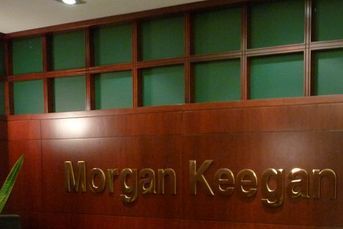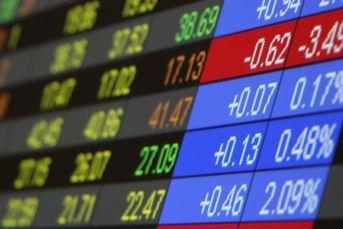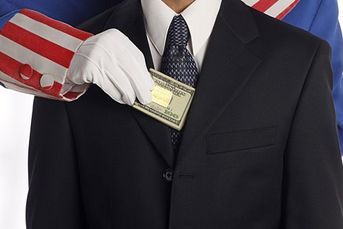<b>INcite:</b> Want to create jobs? First cut capital gains taxes

Along with jobs, raising taxes on the rich is one of things the Wall Street protesters feel strongly about, as Andrew Cuomo, the Democratic governor of New York, is learning all too well.
Along with jobs, raising taxes on the rich is one of things the Wall Street protesters feel strongly about, as Andrew Cuomo, the Democratic governor of New York, is learning all too well.
Cuomo has become a target for activists because he’s refusing to fight to extend a state-tax surcharge on the wealthy that expires soon. Cuomo’s insistence on protecting the rich is causing fellow Democrats to ask whether he has forgotten that he stands for workers.
But Cuomo’s insistence is born of experience. Higher taxes can destroy jobs. As data from the Tax Foundation show, New Yorkers are net migrants to Connecticut. Both Cuomo and various jubilant governors in Connecticut have attributed the shift to taxes. Cuomo has said that he aims to ensure the tax regime in the Empire State stops driving others away. “I think you are kidding yourself if you think you can be one of the highest-taxed states in the nation, have a reputation for being anti-business and have a rosy economic future,” Cuomo said recently, according to the Daily News.
He may also have looked at weightier studies surveying the treatment of capital nationally. These suggest that sparing the rich from paying taxes creates jobs. This is especially true for the capital-gains tax, the levy that defines the rentier class that the protesters resent.
Modeling Rates
Evidence for this began to accumulate in the 1970s and ’80s, when Wall Street forecaster Allen Sinai was assembling models to simulate the effect of public-policy changes for Data Resources Inc. and Lehman Brothers Holdings Inc.
Sinai moved on and developed succeeding mega-models, the most recent being the Sinai-Boston macroeconomic simulation program. Early on, Sinai and his colleagues noticed that changes in the capital-gains tax rate affect economic growth. And for decades, Sinai has been analyzing rate changes to forecast for Democrats and Republicans alike. He told me this week that his overall conclusion is: “Lower capital-gains taxes help to grow the economy at relatively low cost to the deficit and debt.”
The American Council for Capital Formation, a Washington-based group that lobbies for lower taxes on investments, asked Sinai to model how the economy might perform if the current capital-gains levy of 15 percent were changed. He estimated how fast the economy would grow over five years, using rates ranging from 0 percent to 50 percent, relative to probable growth under the current law.
Dramatic Results
The study was published in 2010, and Sinai says he still stands by it. The results are dramatic. Right now, economists say the economy needs to create about 2.4 million jobs a year. Sinai found that eliminating the capital-gains tax alone, with no other policy change, would create 1.3 million per annum, or more than half the total sought. Real gross domestic product would increase by 0.23 percentage point a year. The jobless rate would drop by as much as 0.7 percentage point in a year. And productivity gains would increase by 0.5 percentage point a year.
This change would bring the U.S. much closer to the growth levels to which we were once accustomed. And it wouldn’t damage the budget nearly as much as simply calculating the amount of revenue foregone would suggest.
Cheap Capital
That’s because the growth created would generate other kinds of tax revenue. Without a capital-gains tax, the official numbers suggest the government would lose about $451 billion. But Sinai, like many economists, likes to use a method called dynamic analysis, which takes into account benefits or damage to the rest of the economy that a rate change would cause.
By Sinai’s dynamic analysis, the actual revenue loss “ex post,” after including the other consequences of the rate change — such as the increased hiring and business formation that occurs when tax systems are friendlier to capital — would be only $8.2 billion. Employers, finding capital cheaper, would have more cash to hire. Cutting the rate to even 5 percent would still add 711,000 new jobs per year.
By the same logic, an increase in the capital-gains tax rate, even a small one, can do damage. Today, many economists talk about increasing the top rate to 20 percent from 15 percent, and note that President Ronald Reagan himself signed legislation that raised the rate to 28 percent from 20 percent in 1986. Yet that small change, which sounds like a perfect compromise, would cost 602,000 jobs annually, according to Sinai’s model.
Zero Percent
The idea of a 0 percent levy might sound absurd to ears ringing with Wall Street protest, but the idea has been around for a while, and has gained support in a number of places. Former Federal Reserve Chairman Alan Greenspan has often spoken out for it. Numerous other countries have experimented with a 0 percent capital-gains rate over the years. Hong Kong officials swear by it.
What about the fairness the protesters chant for? Sinai says he favors raising taxes on one kind of capital gain, carried interest, to treat it as ordinary income. But the bigger picture is that lower taxes on capital are good for workers, a group that includes protesters and their siblings. They will have to decide whether they care more about punishing the rich or about increasing the number of jobs on offer to their friends. It’s a tough call. My guess is, as the temperature drops, the protesters will take jobs over rage.
(Amity Shlaes is a Bloomberg View columnist. The opinions expressed are her own.)
–Bloomberg News–
Learn more about reprints and licensing for this article.







